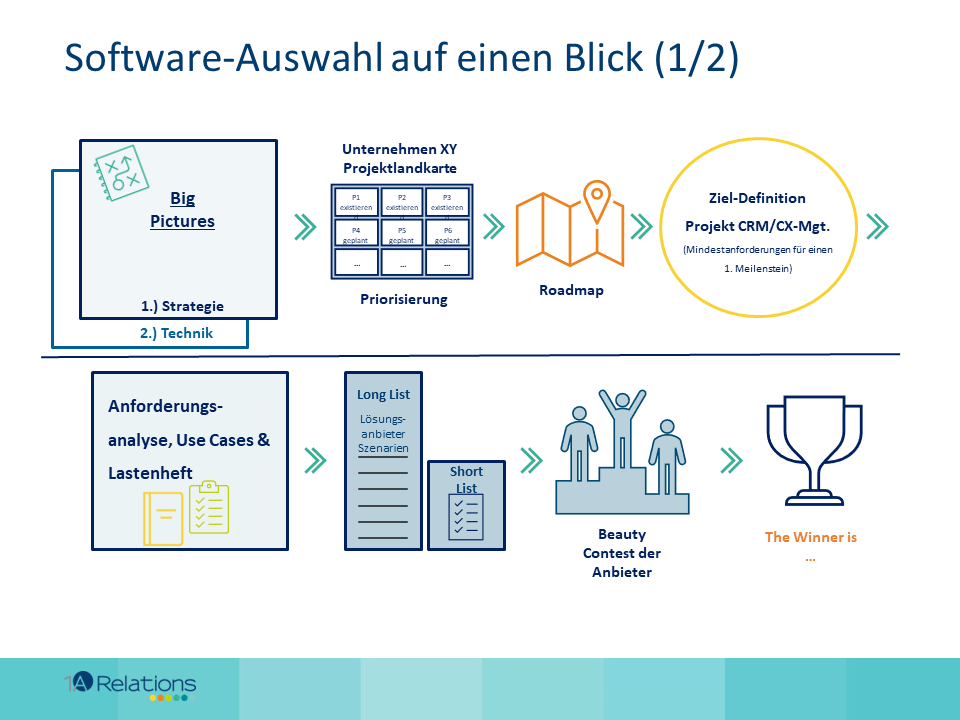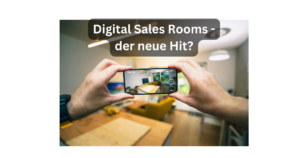A software selection and the creation of an IT landscape (IT Big Picture) is similar to fishing in the clouds.
A software selection always starts with the question: What do you want to do with it? Hitting a nail in the wall? Getting from A to B? Should it be a lubricant for collaboration? Automation, perfection, selection? What exactly should happen, be achieved? Only if this is clear, then meaningful products are purchased, useful solutions are created, the creation of an IT landscape is targeted.
We go the extra mile!
There is never a simple answer to the question: Which software on the subject of XY do you recommend to us? Because the market is so confusing, so large, so diverse. Scott Brinker recently estimated it at over 100,000 tools.
The MarTech software market has been growing for over 10 years. Not just that.
“Well, at least today. Frankly, consumer and business software apps are powered by much of the same underlying technology. And you see increasing cross-pollination between those domains. The consumerization of IT remains a big movement underway. I personally see similarities between creators on consumer platforms and “makers” inside companies leveraging no-code tools. And if you believe the hype of the metaverse — which will one day rise from the trough of disillusionment — the convergence of business and consumer experiences will blur even further.
But for now, let’s stick to a narrow interpretation of how many business software apps are there in the world? The answer: at least 103,528.”
Are you also on the path of digital transformation? Pretty difficult terrain – creating an IT landscape!
Then the following will sound familiar to you:

A very well-known symbol of #Bottleneck. Where in our consultations does this happen very frequently?
If a company wants to “drive” far too many #Projects through the bottleneck at the same time.
e.g. There is a lack of #Capacities in the #IT, capacities in the #Users(always the same important employees), “surprising dependencies” in the #Project planning (both within a project and across projects), agile #Methodology leads to an industrial, staccato processing of the sprints, etc.
Therefore, in this case, we offer a screening that shows the #Project Landscape and their dependencies (both at project level and at #System level).
We suggest recommendations on how the company can increase or better channel the “flow”.
What is most important? The tasks of the #Management (how do you control #Multi project management?), which employees are involved with how much % in the daily business and how much % in the project business, are the employees (IT as well as users) able to control these projects, what can a #Prioritization look like, how do you find a #Balanced #Scorecard from #Costs and #Benefits?
What should the collaboration between IT and business look like?
Last but not least: Which software and #Service provider #Contracts need to be renegotiated? Where are products not adequate? Which should remain, which should be replaced? What does that look like #Big #Picture?
In what form and procedure do IT and the specialist department work together? Jour fixe, Steercos, work meetings, bi-lateral coordination.
Who considers where which dependencies arise or exist?


The management would like to have everything, preferably fast and cheap.
BUT, the path will not be an easy one.
None of the paths is an easy one. They should only be guided by one premise: only what generates customer benefit is done.
Not easy to digitize the previous one. The old saying: Digitizing a process remains a digital process. That’s right.
Nothing is more beautiful than in such cases to question, simplify and improve the existing one.
Consequence: it takes longer, yes. but it gets better.
It’s not just about products, but solutions, with a focus on creating an IT landscape
End to End – is the most important thing:
IT is usually set up according to products. Users think according to processes. So you need a team of IT and users who think, act and control projects end-to-end. Selects and installs software solutions along the value chain.
Then “becomes a shoe out of it”, then customer experience AND user experience is created. Because the employees get the products they need, have fun using them, constantly develop them further. This creates a perfect customer experience.
Result: The customer comes back and not the product.
Note: This is a machine translation. It is neither 100% complete nor 100% correct. We can therefore not guarantee the result.












